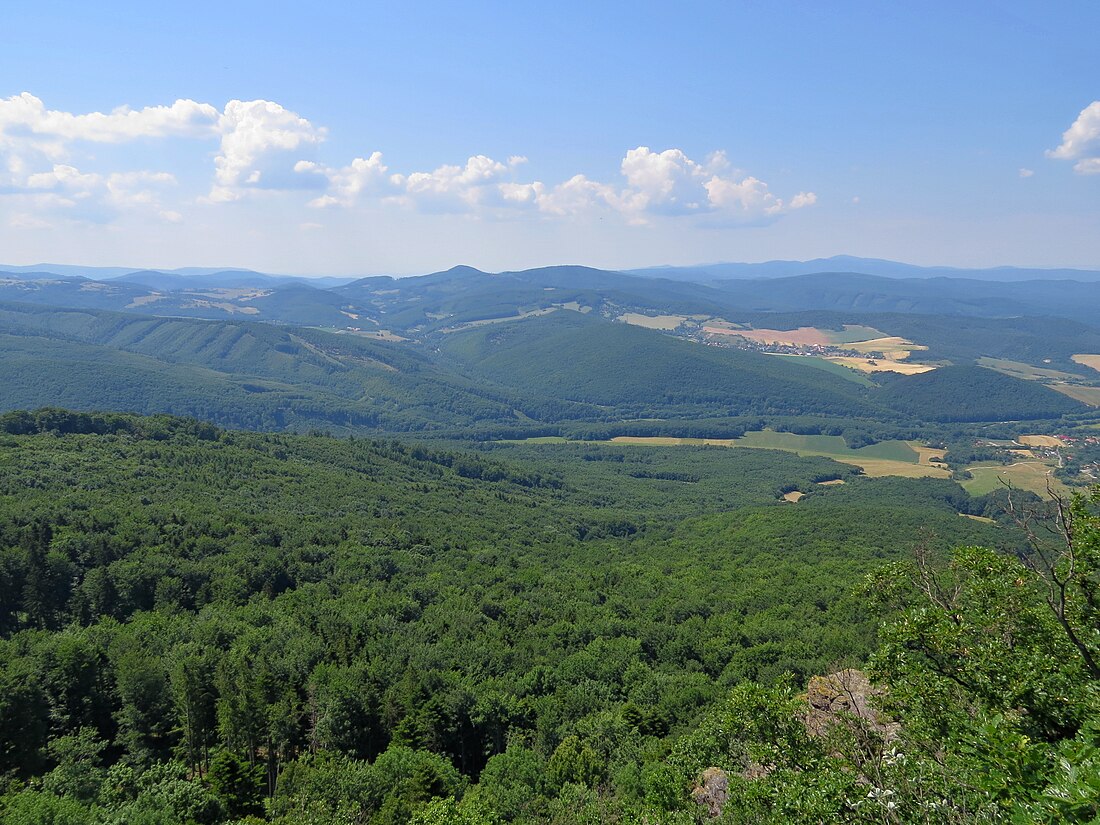Top Qs
Timeline
Chat
Perspective
Pannonian mixed forests
European ecoregion From Wikipedia, the free encyclopedia
Remove ads
The Pannonian mixed forests is a temperate broadleaf and mixed forests ecoregion in Europe. It covers an area of 307,720 km2 in all of Hungary, most of Slovakia, about half of Croatia and Slovenia, around a third of Bosnia and Herzegovina, Romania, and Serbia, and minor parts of Austria, Czech Republic, and Ukraine.
This article needs additional citations for verification. (September 2024) |
Remove ads
Flora
The plant communities include mixed oak-hornbeam forests, azoal floodplain vegetation and lowland to montane herb-grass steppes.
Mixed oak-hornbeam forests are mixed forests of pedunculate oak and sessile oak and hornbeam. Sub-Mediterranean thermophilous bitter oak forests grow in warmer areas. These forests are dominated by Quercus pubescens, Quercus cerris, and Quercus frainetto mixed with other trees, mainly Fraxinus ornus and Carpinus orientalis. Higher elevation areas are dominated by European beech and silver birch, downy birch, European aspen and sometimes by conifers Abies alba, Picea abies, Pinus sylvestris, Pinus nigra.
Riparian forest and azoal floodplain vegetation occurs along rivers and lakes. It is dominated by Populus nigra, Populus alba, Salix alba, Alnus glutinosa, Fraxinus oxycarpa, Ulmus minor and Quercus robur. Phragmites australis is dominant in most wetlands.
Lowland to montane herb-grass steppes dominate large areas of the ecoregion. The dominant species are Stipa zalesskii, Bromus riparius and the shrubs Prunus fruticosa and Prunus spinosa.[2]
Remove ads
Fauna
Mammals
Reptiles and amphibians
Birds
- little tern
- great bustard
- lapwing
- common redshank
- barn owl
- ural owl
- tawny owl
- Western capercaillie
- black grouse
- Eurasian hoopoe
- mistle thrush
- song thrush
- ring ouzel
- fieldfare
- redwing
- common blackbird
- Eurasian wren
- wallcreeper
- common starling
- barred warbler
- lesser whitethroat
- Eastern subalpine warbler
- orphean warbler
- common whitethroat
- garden warbler
- blackcap
- European turtle dove
- Eurasian collared dove
- western rock nutthatch
- wood nuthatch
Remove ads
References
External links
Wikiwand - on
Seamless Wikipedia browsing. On steroids.
Remove ads


